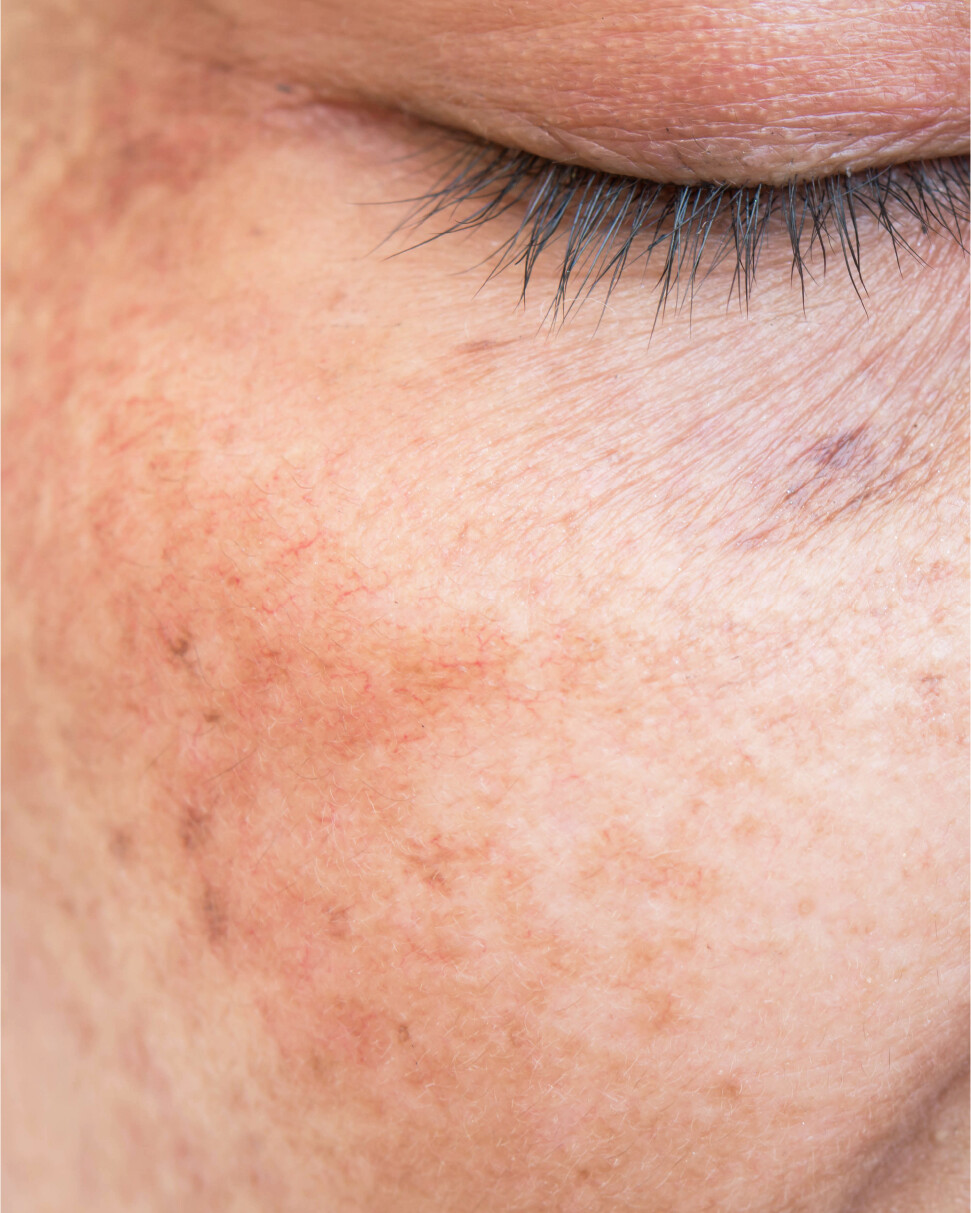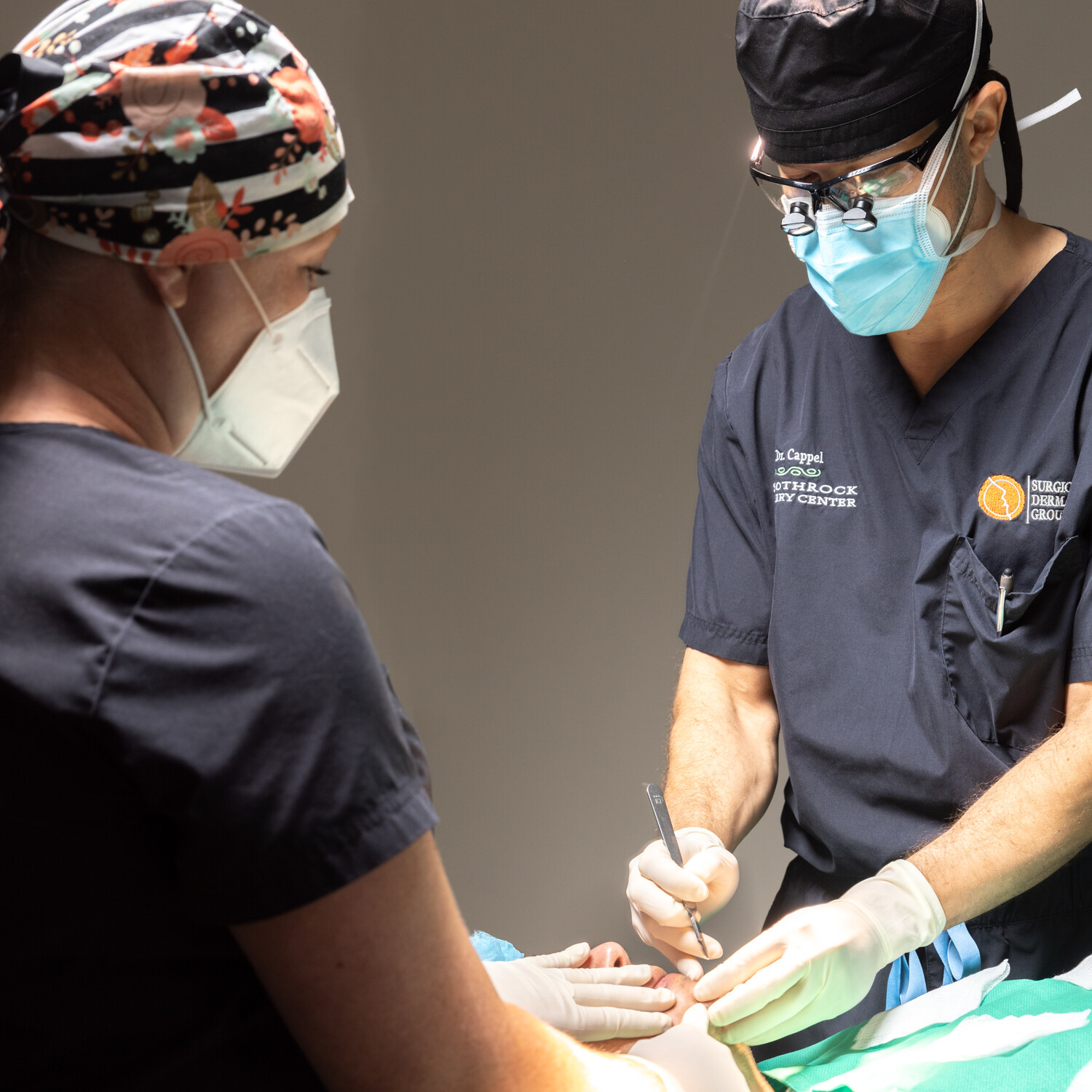Squamous Cell Carcinoma

Squamous cell cancer may occur in normal skin or in skin that has been injured or inflamed. Most skin cancers occur on skin that is regularly exposed to sunlight or other ultraviolet radiation.
The earliest form of squamous cell skin cancer is called Bowen’s disease (or squamous cell in-situ). This type of squamous cell carcinoma is in the epidermis (top layer of the skin) and has not yet invaded into the dermis (deeper layer of skin).
Squamous cell carcinoma is the second most common type of skin cancer. Each year in the United States, over 250,000 cases of invasive squamous cell carcinomas are diagnosed. About 65% of squamous cell carcinomas occur on the head and neck. Currently, it is estimated that one in every five Americans will develop skin cancer during their lifetime; many of which are squamous cell carcinoma.
Actinic keratosis is a precancerous skin lesion that may become a squamous cell cancer if left untreated. Approximately 10% of actinic keratosis will develop into a squamous cell carcinoma if not treated.
Risks for squamous cell skin cancer include:
- Light-colored skin, blue or green eyes, and blond or red hair
- Long-term, daily sun exposure (such as in people who work outside)
- Older age
- Radiation exposure
- Chemical exposure
- Burns or large scars
Squamous cell skin cancer usually occurs on the face, ears, neck, hands, or arms, although it may occur in other locations as well. The main symptom is a growing bump that may have a rough, scaly surface and flat reddish patches. The earliest form appears as a scaly, crusted, reddish patch. A sore that does not heal, bleeds, or is painful can be a sign of squamous cell cancer. Any change in an existing wart, mole, or other skin lesion could be a sign of skin cancer.
Call for an appointment with your health care provider if you have a sore or spot on your skin that changes in appearance, color, size or texture, or if it becomes painful or swollen, or starts to bleed or itch.
Your doctor will check your skin and look at the size, shape, color, and texture of any suspicious areas. If your doctor thinks you might have skin cancer, a piece of skin will be removed in a procedure called a skin biopsy, and the specimen will be sent to a lab for examination under a microscope.
High risk features of squamous cell carcinoma include: size less than 2cm, depth of invasion greater than 2mm, location on the lip or ear, developing within a scar, invasion into superficial nerves in the skin, and invasion into the deeper levels of the skin and fat.
Treatment depends on the size and location of the skin cancer, how far it has spread, and your overall health. Some squamous cell skin cancers may be more difficult to treat.
Treatment may involve:
- Excision: Cutting out the visible skin cancer with a safety margin of normal skin surrounding and stitching the skin together.
- Mohs surgery: Removing the skin cancer and a thin layer of surrounding skin and looking at it immediately under a microscope. If any cancer is remaining, then additional layers of skin are removed until there are no signs of the cancer. Mohs surgery is usually used for cancers that are on the face, hands or other cosmetically sensitive areas, for large or aggressive cancers, or cancers in high risk patients.
- Curettage and electrodesiccation: Scraping away cancer cells and using electricity to kill any that remain; it is used to treat cancers that are not very large or deep.
- Cryosurgery: Freezing the cancer cells with liquid nitrogen.
- Medication: Skin creams containing imiquimod or 5-fluorouracil may be prescribed by your doctor for squamous cell carcinoma in-situ.
- Photodynamic therapy: Treatment using a topical medication and high powered blue or red light to activate the medication can be used to treat squamous cell carcinoma in-situ.
- Radiation: May be used if the squamous cell skin cancer has spread to organs or lymph nodes, or for cases that cannot be treated with surgery.
How well a patient does depends on many things, including how quickly the cancer was diagnosed. Most of these cancers are cured when diagnosed and treated early. Some squamous cell cancers may return even after having appropriate treatment. Patients who have a history of skin cancer have a higher risk of developing new skin cancers in other locations.
If you have had skin cancer you should have regular check-ups so that a doctor can examine your skin. You should also examine your skin once a month. Use a mirror to check hard-to-see places, and call your doctor if you notice anything unusual.
If left untreated, squamous cell cancer will eventually spread to other parts of the body. In most patients, it takes many years for the cancer to spread.
Like every other preventable condition, the best way to live above SCC is by preventing it from occurring. Most of the preventive actions against SCC involve lifestyle changes that are easy to achieve, with determination. Some of the ways to prevent SCC include:
- Minimize sun exposure: Avoid being under the sun at midday or at other times when the sun’s intensity is high. Reschedule your outdoor activities to a time when the sun is less intense.
- Monitor your skin: Early detection of cancerous growths is a critical component of a successful treatment. Examine your skin regularly for uncommon growths and contact your dermatologist immediately if you notice anything out of the ordinary.
- Avoid artificial tanning: Avoid visiting tanning houses and using tanning equipment. Tanning is a source of UV rays and should be avoided.
- Use of sunscreen: Wearing sunscreens daily will help you reduce the effects of the sun on your skin. Sun damage is cumulative, so the long term effects of daily activities such as driving to work and outdoor activities can result in significant damage.
- Wear protective clothing: Protective clothing that covers your arms and legs, and broad-brimmed hats to shield your face, neck, ears and scalp will help protect you from excessive sunlight. Sunglasses can also help protect your eyes from UV radiation.
- Reduce exposure to toxic metals: When at places where you’re exposed to arsenic, we advise you to wear the recommended protective equipment to protect yourself from the toxic effect of metal. Also, ensure you drink uncontaminated, clean water to reduce your exposure to arsenic.
